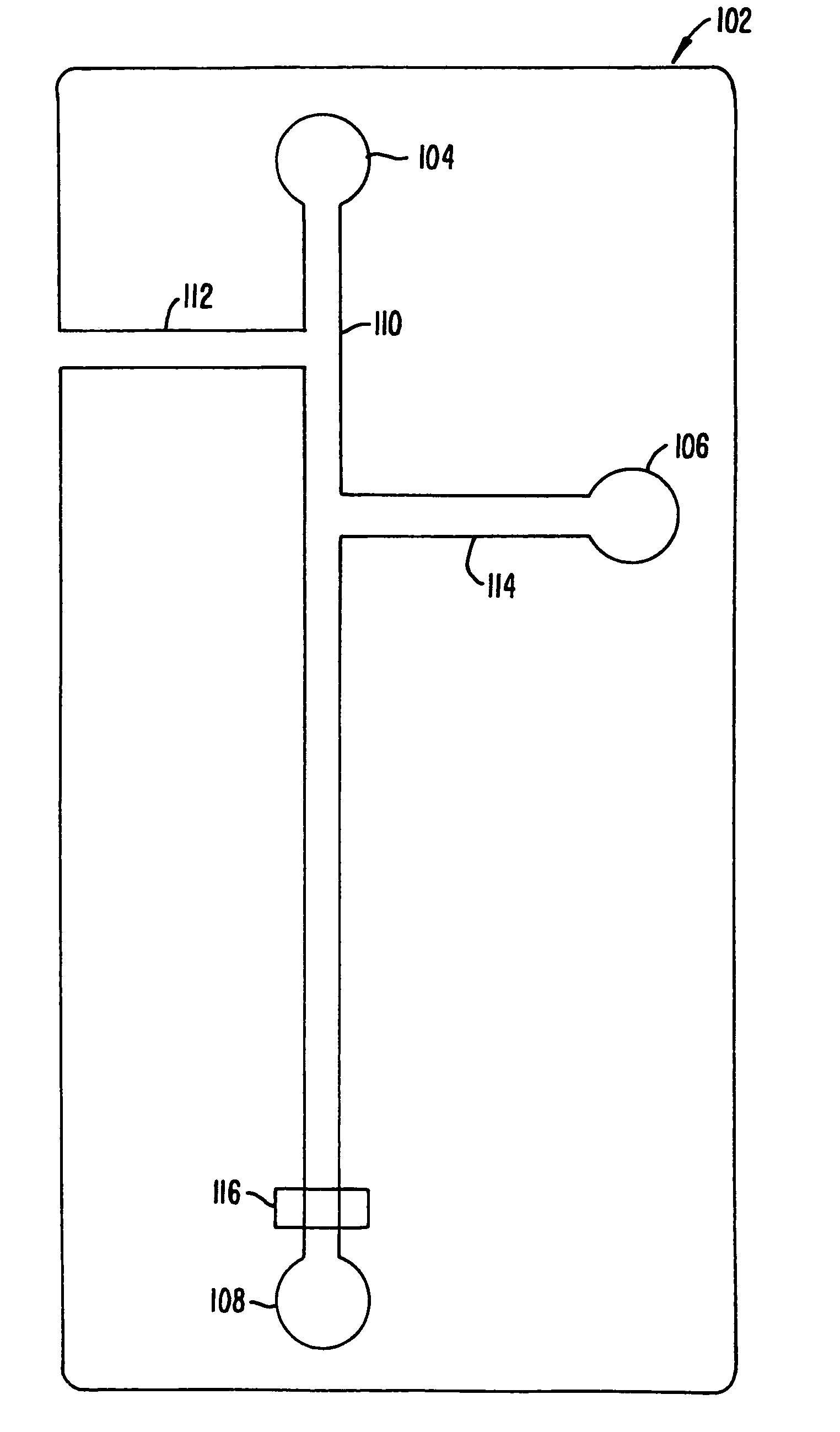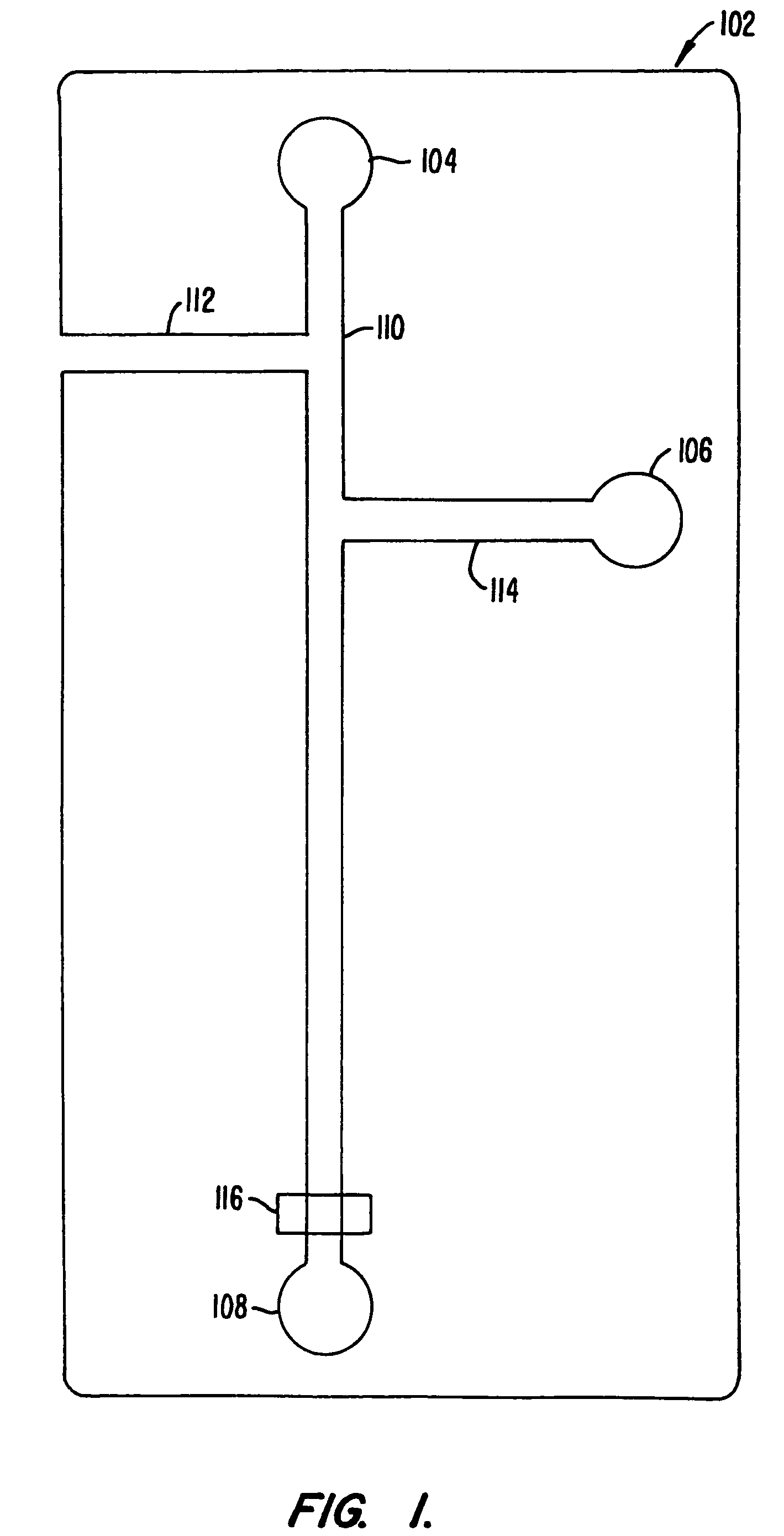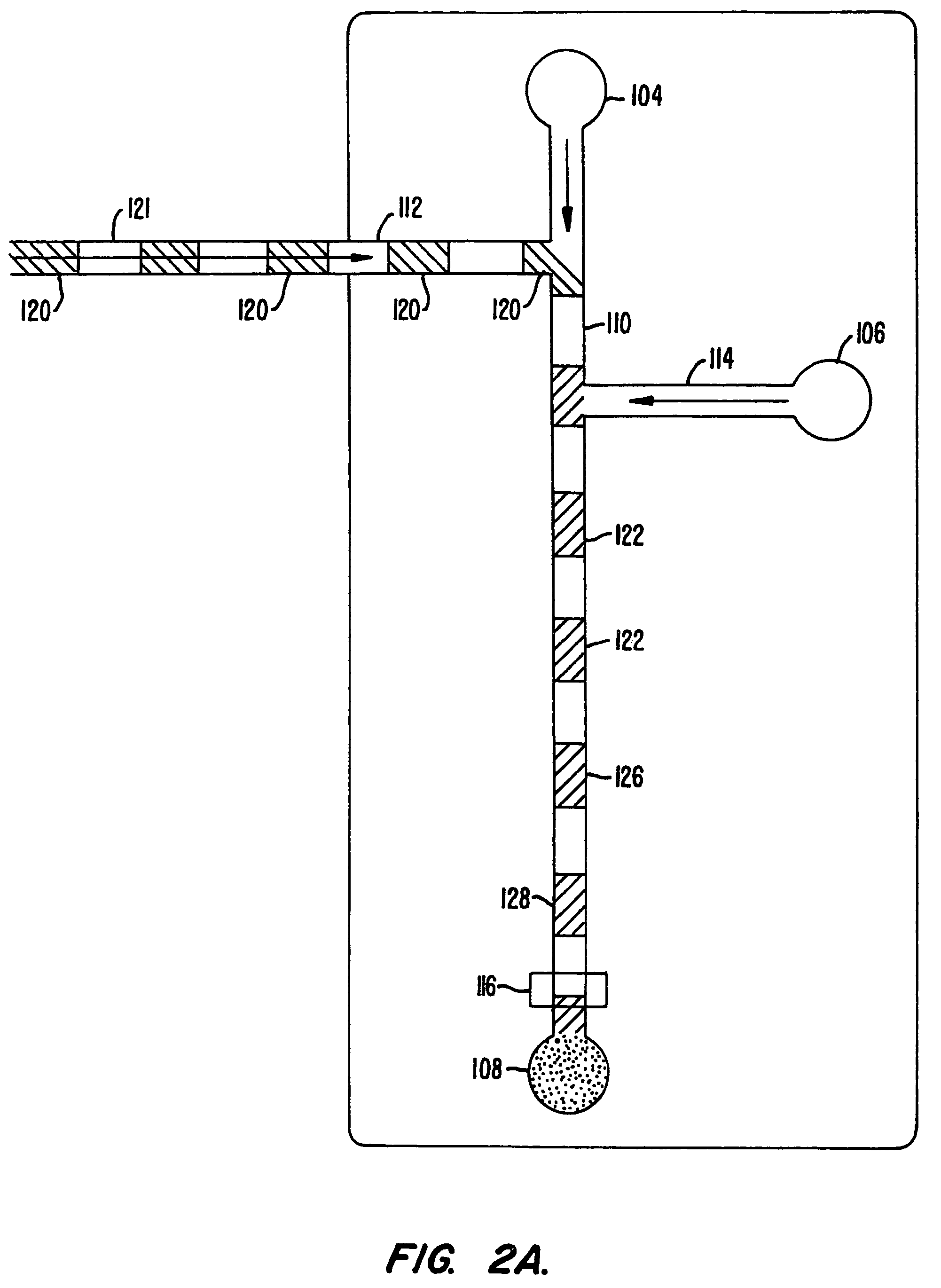High throughput screening assay systems in microscale fluidic devices
a fluidic device and screening assay technology, applied in the field of apparatus and assay systems for detecting molecular interactions, can solve the problems of poor oral bioavailability, limited drug discovery, and limited assay throughput of modern drugs
- Summary
- Abstract
- Description
- Claims
- Application Information
AI Technical Summary
Benefits of technology
Problems solved by technology
Method used
Image
Examples
example 1
Enzyme Inhibitor Screen
[0148]The efficacy of performing an enzyme inhibition assay screen was demonstrated in a planar chip format. A 6-port planar chip was employed having the layout shown in FIG. 8. The numbers adjacent the channels represent the lengths of each channel in millimeters. Two voltage states were applied to the ports of the chip. The first state (State 1) resulted in flowing of enzyme with buffer from the top buffer well into the main channel. The second voltage state (State 2) resulted in the interruption of the flow of buffer from the top well, and the introduction of inhibitor from the inhibitor well, into the main channel along with the enzyme. A control experiment was also run in which buffer was placed into the inhibitor well.
[0149]Applied voltages at each port for each of the two applied voltage states were as follows:
[0150]
State 1State 2Top Buffer Well (I)18311498Inhibitor Well (II)14981900Enzyme Well (III)18911891Substrate Well (IV)14421442Bottom Buffer Well ...
example 2
Screening of Multiple Test Compounds
[0153]An assay screen is performed to identify inhibitors of an enzymatic reaction. A schematic of the chip to be used is shown in FIG. 10. The chip has a reaction channel 5 cm in length which includes a 1 cm incubation zone and a 4 cm reaction zone. The reservoir at the beginning of the sample channel is filled with enzyme solution and the side reservoir is filled with the fluorogenic substrate. Each of the enzyme and substrate are diluted to provide for a steady state signal in the linear signal range for the assay system, at the detector. Potentials are applied at each of the reservoirs (sample source, enzyme, substrate and waste) to achieve an applied field of 200 V / cm. This applied field produces a flow rate of 2 mm / second. During passage of a given sample through the chip, there will generally be a diffusive broadening of the sample. For example, in the case of a small molecule sample, e.g., 1 mM benzoic acid diffusive broadening of approxim...
PUM
| Property | Measurement | Unit |
|---|---|---|
| wavelengths | aaaaa | aaaaa |
| wavelengths | aaaaa | aaaaa |
| wavelengths | aaaaa | aaaaa |
Abstract
Description
Claims
Application Information
 Login to View More
Login to View More - R&D
- Intellectual Property
- Life Sciences
- Materials
- Tech Scout
- Unparalleled Data Quality
- Higher Quality Content
- 60% Fewer Hallucinations
Browse by: Latest US Patents, China's latest patents, Technical Efficacy Thesaurus, Application Domain, Technology Topic, Popular Technical Reports.
© 2025 PatSnap. All rights reserved.Legal|Privacy policy|Modern Slavery Act Transparency Statement|Sitemap|About US| Contact US: help@patsnap.com



